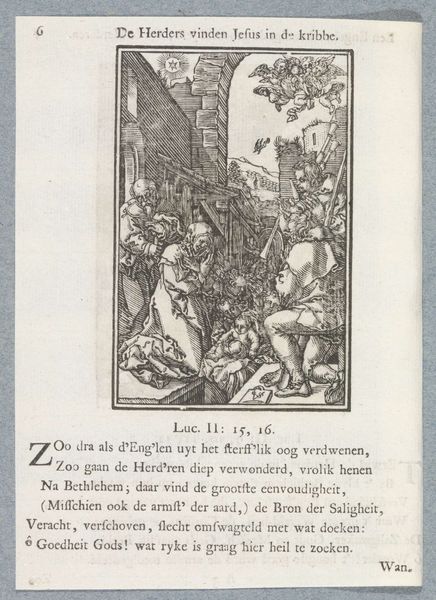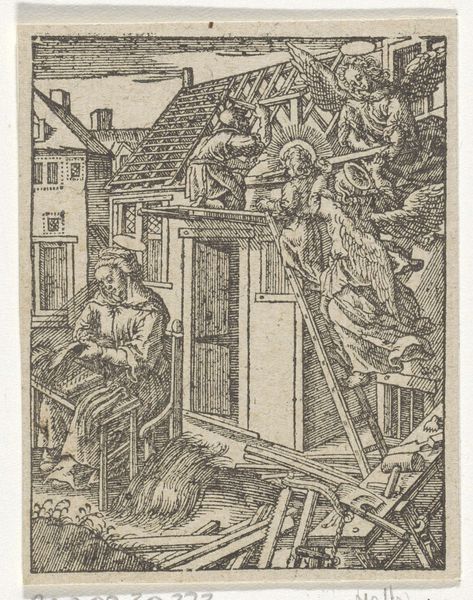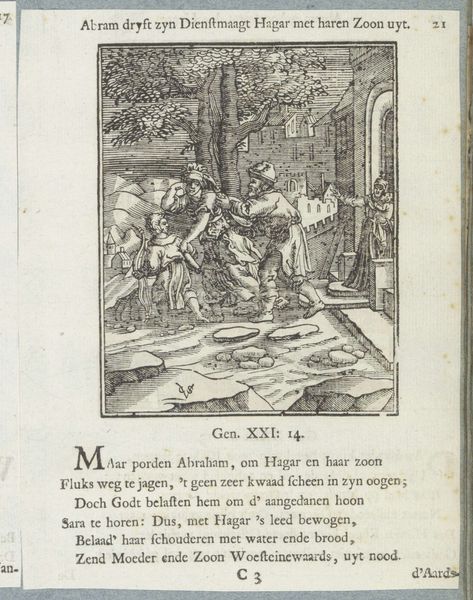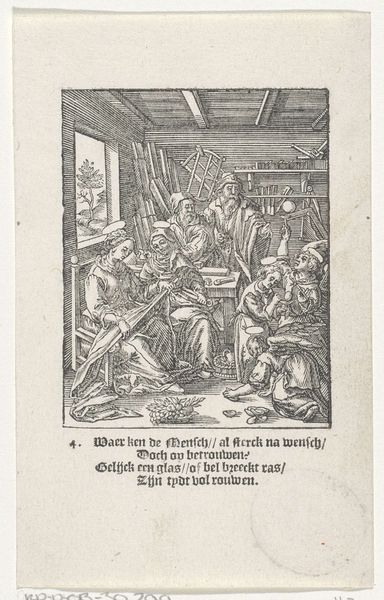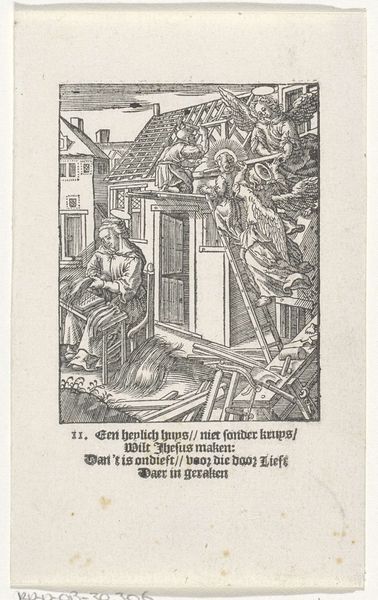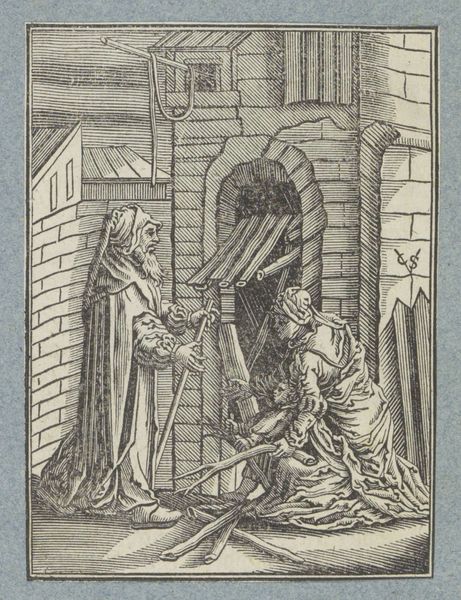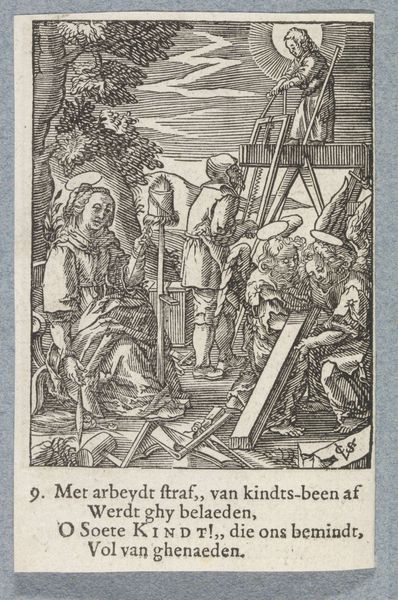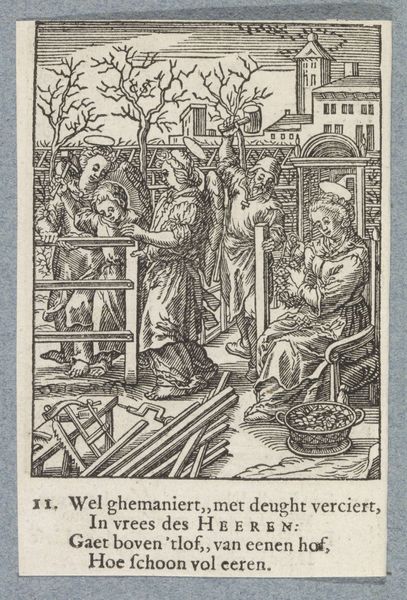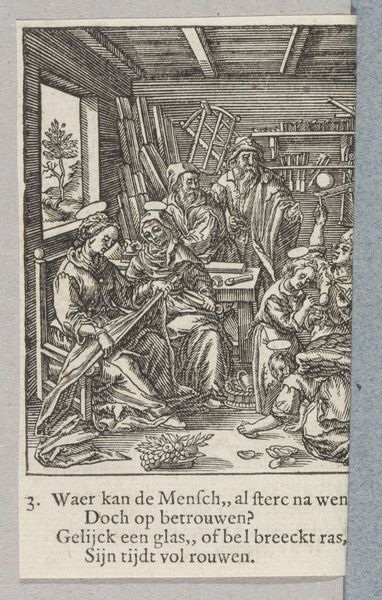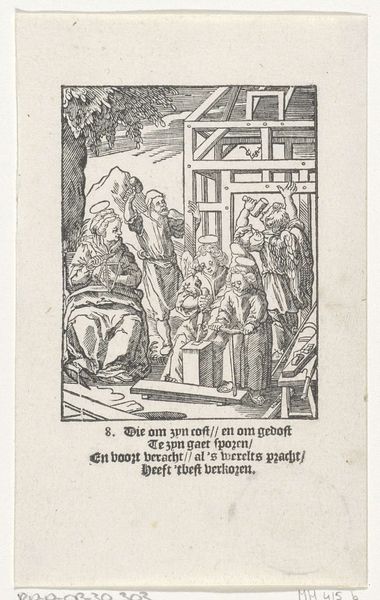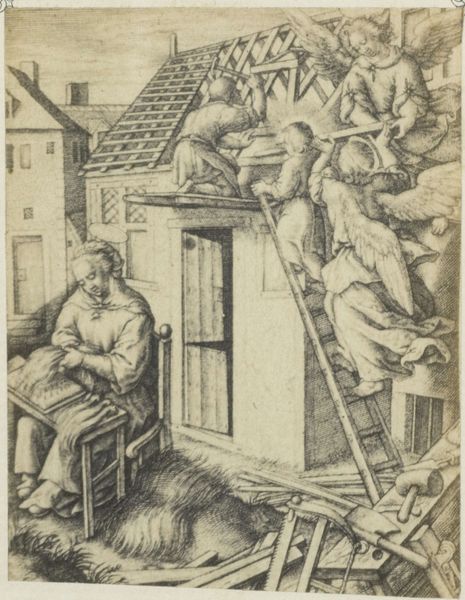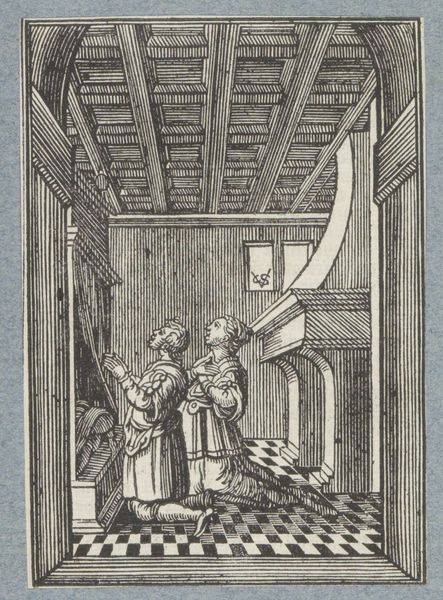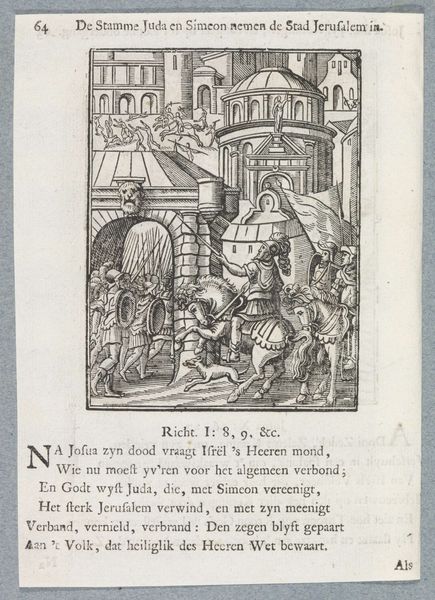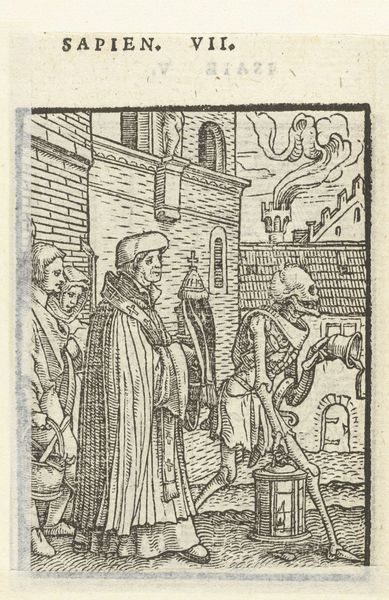
print, engraving
#
comic strip sketch
#
aged paper
#
narrative-art
# print
#
old engraving style
#
sketch book
#
figuration
#
personal sketchbook
#
sketchwork
#
line
#
pen work
#
sketchbook drawing
#
history-painting
#
storyboard and sketchbook work
#
northern-renaissance
#
sketchbook art
#
engraving
Dimensions: height 81 mm, width 63 mm, height 101 mm, width 80 mm
Copyright: Rijks Museum: Open Domain
Editor: This engraving from 1617, "Christuskind legt een dak" by Christoffel van Sichem II, is so detailed despite being a print. It depicts, well, what looks like the Christ child constructing a roof, with an angel holding tools! How do you interpret this work purely from its visual structure and composition? Curator: I observe a distinct spatial organization. Note the deliberate arrangement of figures across planes, foreground to background, creating a sense of depth despite the print's two-dimensionality. The linear perspective, though somewhat naive, establishes a clear architectural framework, which is then counterpointed by the more ethereal depiction of the angels. Editor: I see that. So, beyond the subject, are you drawn to certain elements like line quality, or the relationship between positive and negative space? Curator: Precisely. The density of lines used to render texture and shadow, especially in the figure of the seated woman, contrasts markedly with the sparser treatment of the angels, differentiating the earthly and the divine. And notice how the ladder, placed centrally, serves as a compositional bridge between these two realms. The semiotic function of ladders implies ascent to heaven, just as in biblical symbolism of Jacob's ladder. Editor: That's fascinating! It sounds like even the distribution of dark and light is significant. What would you say is the effect on the narrative? Curator: It enhances the dynamic tension. The darkness clustered around the earthly figures and the tools creates a sense of labor and materiality. Then, by contrast, the lightness surrounding the angels implies spiritual grace and purpose. The interplay emphasizes a message of finding divine purpose in everyday human toil. Editor: So even without knowing the explicit symbolism, the composition itself tells a story. Curator: Precisely. And indeed a rather eloquent one, given the formal constraints of the medium. This formal approach is something often underappreciated when one studies art. Editor: This has certainly shifted my understanding; it's amazing how much one can read simply by analyzing lines, shapes, and values. Thanks for highlighting these critical observations!
Comments
No comments
Be the first to comment and join the conversation on the ultimate creative platform.
